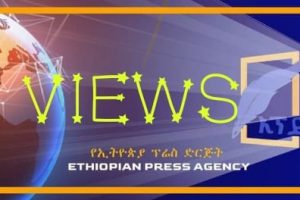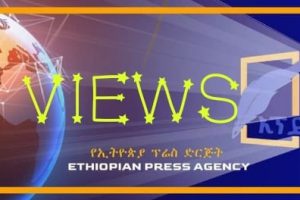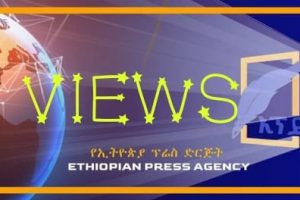Editor’s Note:
This week, briefing the media on the current situation in Tigray State, Ethiopian National Defense Force Army Building Works Main Coordinator Lieutenant General Bacha Debele stated that some armed remnants of the TPLF that had been carrying out different crimes in the state were killed. These remnants had been organized in different eight divisions and carrying out extensive banditry that caused security threats across the state.
I think these small groups comprise few TPLF Junta leaders and fighters that retreated to different areas; it seems that the group can no longer appear as an organized army to control the Tigray State. In this connection, we thought it would be useful to present an extract of the article published by Dr Desta Heliso in the Religion Unplugged, which briefly but comprehensively analyses the historical background of TPLF from its formation to its current state as well as the political developments that led to the devastating conflict between TPLF and the Ethiopian National Defence Forces.
Extract of the Article:
Who were TPLF?
In 1991, I was living in a town called Hosanna, in the South of Ethiopia. I remember when TPLF fighters seized the town. They were young boys and girls poorly dressed and with slender faces but battle hardened. That was 17 years after a Marxist rebel group made up of Tigrean youth started to fight against the Ethiopian army. TPLF was one of the mushrooming “liberation movements” in the 1960s and 70s. It was an ethno-nationalist movement that focused on kinship, and shared memory, narrative, language and culture of its own people group.
Like other liberation movements, TPLF referred to the imperialistic, expansionist and oppressive ideology of the former rulers. So, initially, TPLF sought to establish a separate “free” state of Tigray. But they later came to believe that independent Tigray would not be the best option for the future wellbeing and prosperity of the people of Tigray. So, they brought together other rebel forces from other ethnic groups and established a political party called Ethiopian People’s Revolutionary Democratic Front (EPRDF).
After taking over the country in 1991, EPRDF organized itself as a coalition of four political parties but TPLF remained the dominant political force, as it was the ideological parent of the coalition. EPRDF disbanded the Ethiopian national army and other security apparatuses and established a new national army, federal police force and intelligence service, all of which were dominated by TPLF members.
The political and security dominance enabled TPLF to become economically dominant. TPLF was a wealthy party. During the famine in the 1980s, it had duped Western governments and charities and channeled aid money into the rebel fight. The amount of these funds, according to a BBC report by Martin Plaut, was an estimated $95 million. So it set up corporations and padded resources it had built over the years. TPLF’s political dominance enabled TPLF-related corporations to thrive, while existing state-owned corporations and private businesses weakened.
Political Crisis and Power Transfer
In order to sustain its dominance, the TPLF-led government politically used individuals and communities by applying the Machiavellian principles of “the end justifies the means” and divide-and-rule. Bitter rivalry among members of the party and between ethnic groups was the whole mark of the political process. Even worse, politicians engaged in mutual destructions for personal and political gains. The masters of TPLF ruthlessly exploited all this.
There was development but without justice and fairness in politics and economics. Those who sought justice and fairness were criminalized as anti-peace and development forces. Dissent was suppressed brutally. The entire governance was characterized by endemic corruption, maladministration, land-grabbing in the name of investment, curtailed freedom of expression, tightly controlled media, lack of free and fair elections, and absence of a level-playing field in politics and business, to mention only a few examples. All this led to civil unrests and internal political crisis.
Mounting political pressure forced the then Prime Minister Haile-Mariam Desalegn to launch the so-called “deep political reform agenda” within EPRDF. He also sought to build a national consensus that would lead the country towards national healing. But forces within TPLF prevented him from succeeding. This deepened the political crisis, which was further exacerbated by a tactical alliance formed by the Oromo and Amhara groups within the party against TPLF. The country was on the verge of civil war. Haile-Mariam then adopted a political strategy, whereby he resolved to work with individuals he believed would bring about real reform in the country. One of those individuals was the current Prime Minister Abiy Ahmed. In February 2018, Hailemariam resigned his position as Prime Minister and played a decisive role in having Abiy elected as his successor. TPLF leaders had bitterly opposed Abiy’s election and tried to install someone else who would be obedient to them. That they failed to achieve this caused huge resentment within TPLF, but the smooth power transfer saved the country.
Staggering Changes
After the power transfer in April 2018, hope swept through the nation. There were good reasons for the people to be hopeful. Love, forgiveness, peace and unity became central in political discourse. Sweeping and staggering reforms were initiated. Political prisoners released. Death sentences passed on politically motivated grounds reversed, state of emergency lifted and freedom of the press was established. Banned and blocked media outlets were allowed to operate freely again. Religious factions within the Ethiopian Orthodox Tewahido Church (EOTC) and Islam reconciled.
The political landscape widened with opposition parties no longer regarded as enemies or anti-peace forces. Judicial and security institutions were declared to be independent from political influence. Armed groups based in neighboring countries ceased hostilities and moved back into Ethiopia peacefully. Reforms were introduced in the economic sector. A peace agreement with Eritrea was signed, following which borders between the two nations were opened, and Ethiopian Airlines resumed its flights to Asmara after 20 long years.
All these changes and efforts to reform the military and security services deepened TPLF’s anger and resentment, but the majority of Ethiopians welcomed the reforms. The straw that probably broke the camel’s back was the reform Abiy introduced within the ruling party. TPLF sought to maintain the status quo, but Abiy succeeded in persuading the majority within the party to accept the replacement of the ideology of revolutionary democracy, which was rooted in Marxism and to which TPLF was absolutely committed, with a less ethnocentric, more inclusive and liberal kind of political program.
Although Abiy continued to claim to be committed to a federalist system, TPLF accused him of intending to bring about a Unitarian system of governance. TPLF then left the reformed party altogether. Many, who had served the federal government in various positions, retreated to the capital of Tigray. The most notable examples were the former foreign minister, head of intelligence and army chief of staff.
Relationship Breakdown
Following all the above mentioned sequence of events, the relationship between the Tigray regional government and the federal government broke down. Several attempts made by religious leaders and traditional elders to bring reconciliation between TPLF and the federal government failed, because the TPLF leadership rejected all mediation efforts. In the meantime, several assassination attempts had been made against Abiy Ahmed. TPLF was alleged to be behind them.
Ethnically and religiously motivated killings and displacements were taking place in several regions. A famous Oromo musician called Hachalu Hundessa was murdered in July 2020, which led to many deaths and destruction of properties in several towns in the Oromia region and Addis Ababa. TPLF elements, in partnership with ethno-nationalist movements such as the military wing of the Oromo Liberation Front and anti-government militias in Benshangul-Gumuz region, were alleged to be behind almost all of them. The intended goal was creating instability within the country, causing discontent among the populace, and then eventually bringing down the federal government.
In the meantime, the federal government could not exercise any of its powers in the Tigray region. For example, the federal police could not arrest former officials accused of serious crimes but hiding in Tigray. Even more shockingly, when the federal government sent a new general to serve as head of the Northern Command of the federal forces, TPLF declared him persona non gratia and sent him back to Addis Ababa. At the time, TPLF was strengthening its regional “military” force estimated to be over 300,000 strong, although constitutionally it was only allowed to develop a regional police force. Using its media outlets, TPLF also launched huge propaganda campaign against the federal government and often claimed that the federal government was going to attack them.
Further, TPLF leadership engaged with foreign governments, the African Union, diplomatic communities, and international media to explain its position in relation to the federal government. TPLF then rejected the postponement in 2020 of the national elections due to the COVID-19 pandemic and held its own regional election in September 2020. No attempt was made by the federal government to stop the election, lest that would lead to unnecessary conflict. However, the Federal Parliament and House of Federation declared the election unconstitutional and illegal. In October 2020, TPLF in turn declared Abiy’s government illegal and unconstitutional and ordered its members to leave their parliamentary seats and different ministerial positions at the federal level.
Attack on the Northern Command of the Federal Forces
Then, on Nov. 4, 2020 at around 11 p.m. local time, Tigray regional forces, along with some federal army members of Tigrean origin and loyal to TPLF, launched a coordinated attack on the unsuspecting Northern Command of the Ethiopian Federal Defence Forces stationed in several military bases in Tigray. They then took some of the Command’s military equipment, detained thousands of its members, and killed hundreds in horrific circumstances. Tigray officials on BBC and their own media outlets admitted that their forces carried out this pre-emptive attack. One of them even described it as a “thunder-like action” intended to demobilize the Northern Command and use its weapons to cripple the federal government and ultimately overthrow it.
The Ethiopian government saw all this as a treasonous act and carried out what it called “a law enforcement operation,” which in actual fact was an all-out war. TPLF was defeated and many of those who planned and executed the attack against the federal forces for their political and economic goals have been either killed or captured. The leader of TPLF, along with some of TPLF leaders and fighters, retreated to the mountainous areas. Recently, he called from his hideout on the people of Tigray to continue to fight. Tens of thousands have already lost their lives and hundreds of thousands of people in Tigray are in desperate need of help. The nation once again is scarred and divided, needing urgent and deep national healing.
The Ethiopian Herald 18 April 2021




